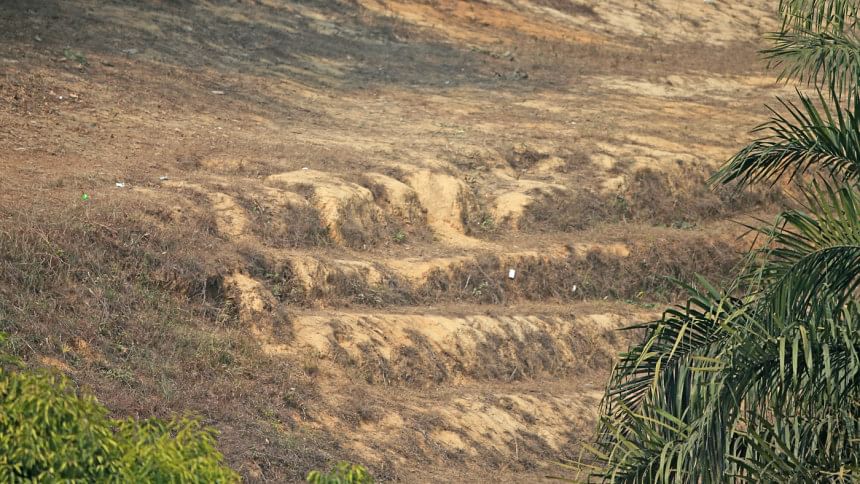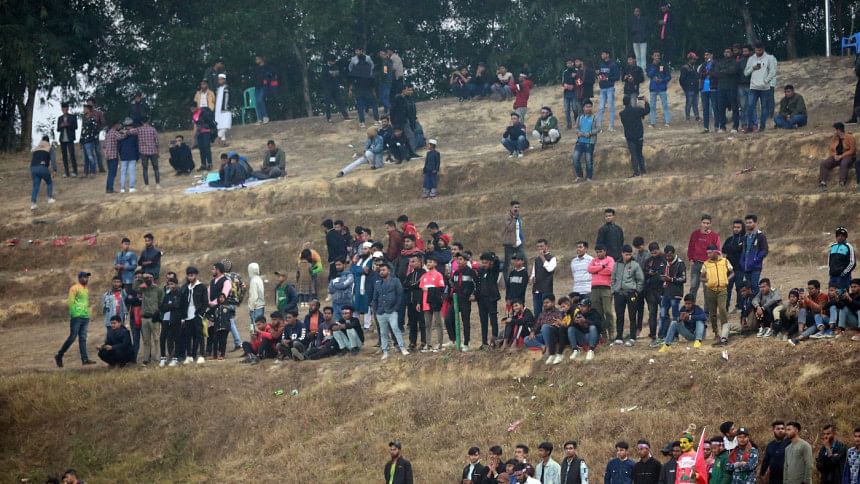Green gallery turning grey

The Sylhet International Cricket Stadium (SICS) is the only stadium in Bangladesh to house a green gallery, lying westward from the media centre, making it one of the most picturesque international grounds in the world.
However, the dream of a lush green gallery, which inspired its inception, is vanishing quickly. Bangladesh Cricket Board (BCB) is responsible for it going to ruins, but the circumstances have played just as big a part.
When the green gallery was built by carving a small hill for it to be level with the stands, it added to the aura of the still-scenic venue. Yet, the lushness that it once bore, reminding of Sylhet's essence with its tea gardens and hills, now stands like an abrupt dwelling, not matching the green of the field of play.

Perhaps it was built to resemble the grass banks of venues in South Africa or New Zealand -- where spectators also enjoy the luxury of watching matches in leisurely fashion -- but the soil itself is not such that a green gallery would serve its function.
Tea gardens are hot and dry places because tea plantations absorb water heavily. The soil in the hills turns red, especially in October and March. The rainy season results in the formation of green grass but, without rain water, it is not effective as filtering water through the ground results in water coming down.
One aspect of the soil getting rougher and having less of a green tinge of grass compared to the grass on the cricket field is down to two different soil types in place.
Inside the field of play, the lush green comes from the durba grass being used, often brought from India. When the very same grass was used on the hill of the green gallery, it was found that during rainy seasons the grass erodes away with the water coming down the hill.
Strangely enough, the flag stand area of the green gallery is still lush. It is to do with the shape and proportion of the flag stand area compared to the entire green gallery at SICS. In that part of the gallery, despite having similar soil, the grassy patch rolls down smoothly to the base. It has meant that the size of it is problematic for maintenance and thus function.
"If you look at international galleries, they are very smooth. We don't have the equipment or the skilled manpower here to slice away the hills to make it less jagged. Those who work with shaving away these hills don't have that expertise," Forhad Quraishi, Sylhet's divisional sports administration's executive member and Sylhet's media manager, informed The Daily Star.
"We can only give the plan but making it into what we want it to be is something we haven't wrapped our heads around yet," he added.

Previously, some two thousand fans were allowed into the stand during matches. There is a restriction now, though. It is a matter of security given the height and despite soil being hard, BCB do not want to take a chance of the soil collapsing when too many people are at one part of the green gallery.
"We don't let the green gallery get filled, it's always 1500 to 1800 people that are allowed and sometimes a thousand," a BCB official informed.
Yesterday, during Sylhet Strikers' match against Fortune Barishal, the gallery flooded more than usual, a security risk that BCB officials say they are aware of.
Even as BCB has provided plans for the hill being cut into the shape needed, the National Sports Council does not have the equipment or expertise either as it is not available in the country.
More often, when something is working, even if not hundred percent, it is allowed to continue. As long as the cricket is not affected, the green gallery's plight too is rendered just about functional. Fans still love to flock there, but it has lost its aura.
Highlights
The red soil of the tea garden hills makes it difficult to grow grass consistently, resulting in barren spots seen now.
The ground staff attempted to plant the grass used on the playing field, but it did not work as expected.
The current goal is to create hospitality boxes that will be carved into the green gallery. BCB believes it is a less complicated process than washing soil down.

 For all latest news, follow The Daily Star's Google News channel.
For all latest news, follow The Daily Star's Google News channel. 







Comments